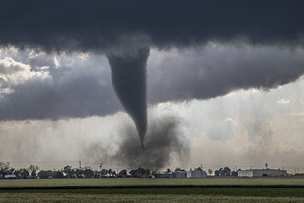An emergency action plan must include steps for reporting an emergency, instructions for evacuating employees and accounting for everyone afterward, guidelines for employees performing essential plant functions and providing medical assistance, and points of contact for the plan.
The Occupational Safety and Health Administration (OSHA) specifies that an emergency plan must be reviewed at certain times: when it is developed or an employee is initially assigned to a job, when an employee’s responsibilities change under the plan, or when the plan changes.
A fire prevention plan must include an inventory of major fire hazards, controls for potential ignition sources, and required fire protection equipment, and contact information for employees who maintain fire prevention equipment and manage fuel-related fire hazards.
Despite these requirements, MSC Industrial Safety Consultant Mark Welch sometimes gets a “deer-in-the-headlight look” from safety managers when he asks about emergency and fire prevention plans.
“When I’m going through and doing a safety needs analysis, first thing when I walk in, I’m looking at their emergency response plan,” he says. “Do they have exit signs? Do they have an evacuation map? Do they have fire alarms? Things like that. And then I’ll ask them, ‘Have you done your annual fire drill?’”
Read more: Emergency Preparedness Training: Tabletop Exercises vs. Mock Drills
The Evacuation Plans and Procedures eTool from OSHA says “it is a good idea to hold practice drills as often as necessary to keep employees prepared,” but the agency doesn’t specify how often to conduct those drills.
OSHA also says fires are the most common type of emergency, which warrants a year-round commitment. Safety manager Justin Sassen conducts two fire drills each year to make sure employees are ready.
“The preparedness is what saves the day,” Sassen tells Safety + Health magazine, a publication of the National Safety Council. “You want to make sure everyone knows what to do if that situation ever were to occur. It’s constantly keeping it in the forefront.”
Welch adds, “The key point is making sure everybody’s on the same page.”
The Role of 3D Modeling and Virtual Reality in Training
The goal of emergency training is to prepare employees to know what to do in an urgent situation, and immersive technologies such as 3D modeling and virtual reality (VR) are proving valuable.
Newer technologies have the power to “transform safety and emergency training by replicating real-world scenarios in controlled environments,” writes Program-Ace, a software development company, in a white paper about emergency training solutions. “These tools enhance engagement, boost knowledge retention, and allow employees to practice handling high-risk situations without real danger.”
In a study of soft skills training by PwC, researchers discovered that compared with classroom sessions, employees taking VR courses get trained up to four times faster, are more focused during training and are more confident in applying what they’re taught.
Welch hasn’t seen metalworking and manufacturing employers using VR for training yet, but he says demonstrations of the tech are common at safety conferences, so it’s a viable solution now.
One study aimed to test whether a 3D gas power plant in a virtual environment could be used to train employees on an emergency preparedness and response plan. The researchers found that participants didn’t need any experience in the workplace application to be successfully trained for situational awareness, fire evacuation drills and fire hazard mitigation.
The findings confirmed that “a simulation environment can be safe and ergonomically suitable for fire emergency assessment provided the VR equipment, safety instructions, protocols and safety procedures are adhered to.”
Read more: How Virtual Reality Is Making Real-World Workplaces Safer
Modern training solutions also allow for real-time data collection to measure the effectiveness of the training, optimize the programs and track progress toward goals.
“Unlike traditional methods, immersive platforms provide dynamic feedback during training, helping workers improve their responses instantly,” Program-Ace explains.
Overcoming Language Barriers in Emergency Training
Immersive emergency training can seamlessly adapt content to suit language preferences, a desirable feature for businesses with employees whose primary language isn’t English.
In a 2010 interpretation memo, OSHA explains that “employee training required by OSHA standards must be presented in a manner that employees can understand.”
Welch agrees. “How can you get emergency preparedness or a plan of action in play when people aren’t understanding?” he says. “Whatever language it is, you’ve got to make sure you’re able to translate that emergency preparedness, the plan of action, in a way that they understand.”
Using modern technologies to train in native languages improves understanding of the material and ultimately avoids potential safety issues.
“In terms of safety training, comprehension increases when learners can give their complete attention to the content without first needing to mentally convert the information into their first language,” Teri Hale of UL Solutions writes in a blog reposted by the Society for Human Resource Management.
“Misinterpretation can lead to lower productivity, lost revenue and more seriously, injury and loss of life,” she writes. “This is especially true in high-risk sectors such as manufacturing, oil and gas exploration, and construction.”
Do you have experience with training using 3D modeling, virtual reality or other immersive technologies? Tell us about it in the comments.



Talk to Us!
Leave a reply
Your email address will not be published. Required fields are marked *